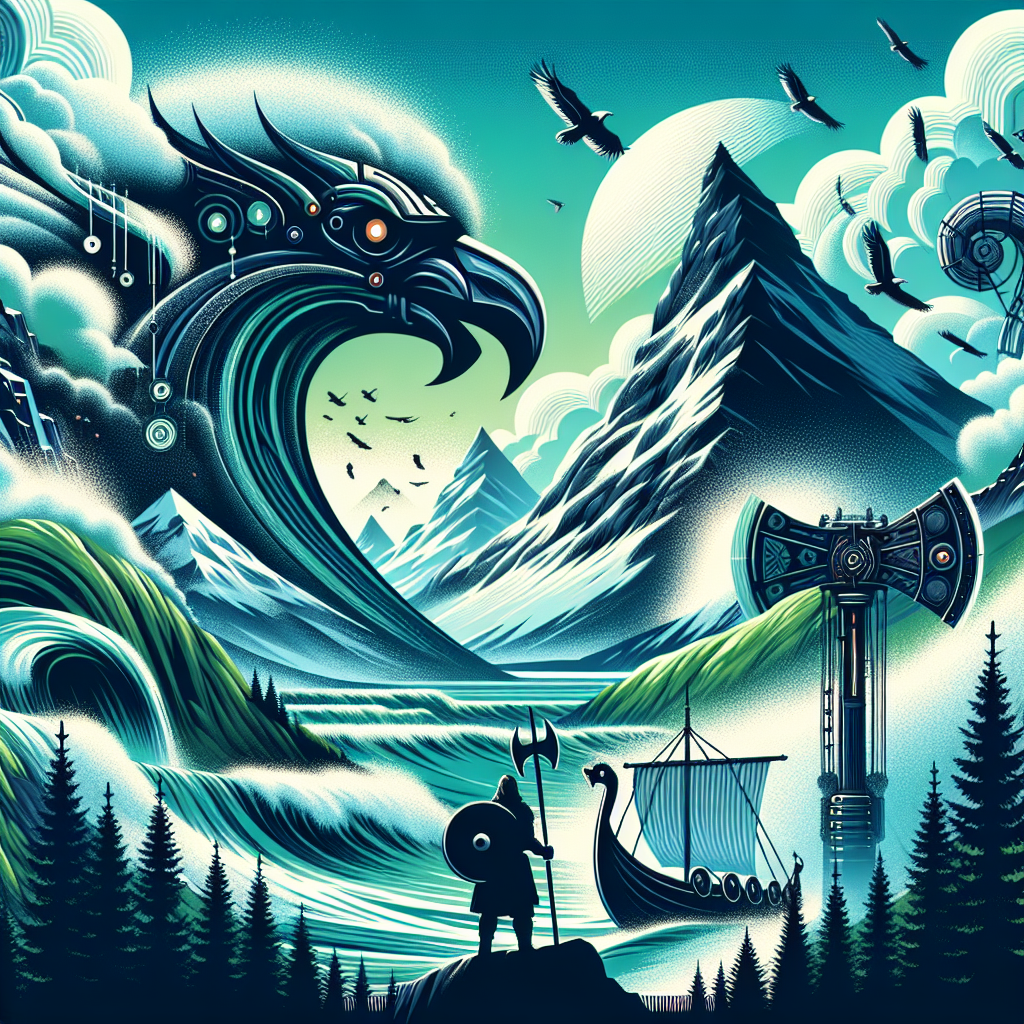The Norse mythology is a rich and complex tradition that has captivated people for centuries. Filled with gods, goddesses, giants, dwarves, and other mythical creatures, the stories of the Norse pantheon are both fascinating and terrifying. What sets the Norse mythology apart from other mythologies is its focus on fate, the concept of Ragnarok, and the harsh, unrelenting nature of the gods.
Traditionally, Norse mythology has been passed down through oral storytelling, with the stories being retold and reinterpreted by each new generation. In this way, the tradition of Norse mythology has remained alive and relevant, even as the world has changed around it. However, in recent years, there has been a resurgence of interest in Norse mythology, with many people looking to reinterpret and reimagine these ancient stories for a modern audience.
One of the key aspects of Norse mythology is the concept of fate. The Norns, the three goddesses of fate, are said to weave the destiny of all beings, both gods and mortals. This idea of a predestined fate is central to the Norse worldview, and it plays a significant role in many of the stories of the gods and goddesses. For example, the story of Ragnarok, the final battle between the gods and the forces of chaos, is seen as an inevitable event that cannot be avoided. This sense of fate and doom gives Norse mythology a sense of weight and urgency that is not always present in other mythological traditions.
Another key aspect of Norse mythology is the concept of innovation. The Norse gods are not static, unchanging beings, but dynamic, adaptable figures who are constantly seeking new ways to overcome challenges and obstacles. For example, Odin, the chief god of the Norse pantheon, is known for his cunning and intelligence, as well as his ability to shape-shift and travel between worlds. Loki, the trickster god, is another figure who embodies the spirit of innovation, constantly bringing chaos and change to the gods and mortals alike.
In recent years, there has been a growing interest in reimagining and reinventing the stories of Norse mythology for a contemporary audience. This can be seen in the popularity of books, movies, and television shows that draw inspiration from Norse mythology, such as Neil Gaiman’s “Norse Mythology,” the Marvel Cinematic Universe’s take on Thor and Loki, and the television series “Vikings.” These reinterpretations of Norse mythology bring a fresh perspective to the ancient stories, often highlighting aspects of the tradition that have been overlooked or forgotten.
One of the ways in which modern retellings of Norse mythology innovate on the tradition is by focusing on the role of women in the stories. While the Norse gods are often portrayed as powerful and courageous figures, the goddesses are sometimes relegated to the sidelines, seen as lesser beings compared to their male counterparts. However, in recent retellings of Norse mythology, there has been a renewed emphasis on the roles of the goddesses, such as Freyja, the goddess of love and fertility, and Frigg, the queen of the gods. These reinterpretations highlight the complex and multifaceted nature of the female figures in Norse mythology, showing them as powerful and important characters in their own right.
Another way in which modern interpretations of Norse mythology innovate on the tradition is by exploring the connections between the ancient stories and contemporary issues. For example, the concept of Ragnarok, the final battle that will bring about the end of the world, has often been seen as a metaphor for the destruction of the environment and the dangers of climate change. By drawing parallels between the ancient stories and modern concerns, writers and artists can bring new relevance and meaning to the tradition, making it more accessible and engaging for a modern audience.
Overall, the Norse mythology tradition is a fascinating and dynamic body of stories that continues to captivate people around the world. While the ancient stories remain a vital part of the tradition, there is also room for innovation and reinterpretation, as artists and writers seek to bring new life and meaning to these ancient tales. By combining the rich history of Norse mythology with contemporary sensibilities, we can ensure that this tradition remains relevant and vibrant for generations to come.





